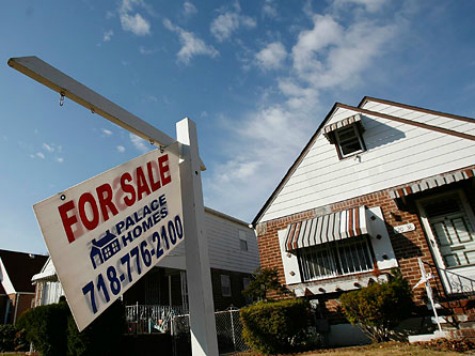
Is the recovery in the US housing market slowing due to rising interest rates or declining affordability? There is a widening debate over this issue, a discussion with big implications for consumers, investors and policy makers.
Last week we saw a sharp decline in new home sales, this as sales of existing homes rose. Purchases of new U.S. homes plunged 13.4 percent in July, the most in more than three years, raising concern higher mortgage rates will slow the real-estate rebound. Sales fell to a 394,000 annualized pace vs. analyst estimates of 475,000. The reading was the weakest since October.
And yet sales of existing homes were up 6.5% in July compared with a year ago. The home price index maintained by mortgage industry data provider Lender Processing Services, shows home prices up 1.2% in June or an annualized rate of 13%. Nevada, Florida and California are the states with the biggest upward moves in home prices, according to LPS. More, seven of the top ten cities in terms of rising home prices are located in California.
While many economists attribute the drop to a “rate shock,” the falloff in home refinancing volumes was predicted months ago, long before the Fed began to talk about policy change with respect to rates in May. Why the divergence between new and existing homes? The first reason may be that investors are focused on purchasing existing homes rather than new dwellings.
“What we’re learning about the housing market over here is that it’s really bifurcated in that you have a lot of private-equity type money and more leveraged-type money buying up some of the older houses that have been in foreclosure, short sales,” said Yra Harris, partner at Praxis Trading. “The new housing market where they’re not as involved is showing a different pattern,” Harris told Reuters last week.
The second, more important factor in the analysis, however, may be affordability. This is not so much about whether or not existing homes have come down in price since the bursting of the mortgage bubble in 2007. Instead the issue is affordability when measured by the ability of consumers to service the debt needed to buy a home today.
Mark Lieberman, economist at FiveStar Institute, worries that the current economic environment looks an awful lot like 2005, just before the mortgage market imploded. “So far this year, the median price of an existing-home has increased an average of 2.5 percent per month and sales are increasing an average of 1.4 percent per month, writes Lieberman in Default Servicing News. “The Case-Shiller index has increased an average 1.3 percent per month.” But what really worries Lieberman is the weakness in consumer purchases, especially the weak sales seen at a variety of retailers. He continues:
“The falloff at furniture and appliance stores suggests homeowners may be stretched to make monthly mortgage payments–even in an era, until recently, of low mortgage rates, rates that will only increase when the Federal Open Market Committee begins to tighten monetary policy. And, according to a newly published paper [from the Federal Reserve Bank of New York], monthly payments are critical in forecasting defaults…. The impact of housing on the rest of the economy–construction jobs and suppliers as well as the financial sector–is, to be sure, a reason to look to housing as a stimulus but not, if as the numbers suggest, history may be repeating itself.”
Leiberman’s concern about the sustainability of the current rebound in home prices raises an important macroeconomic question, namely whether the lack of growth in consumer income over the past few decades has priced homes beyond the reach of many consumers. Many analysts look at “affordability” in terms of the relative changes in home prices, but the cost of servicing a mortgage may be a better measure, especially when it comes to the probability that a loan will default. The Fed and other global central banks have struggled mightily to prevent home prices from adjusting down any further, but consumer income is flat, thus many consumers cannot afford to own a home.
Indeed, my worry is that the massive liquidity provided by global central banks to the financial markets over the past five years has already ignited a substantial housing bubble – but only in selected areas. For example, housing prices around San Francisco are galloping 2-3x the average for the state as a whole, but localities in other areas of the state are not benefitting. Indeed, Inside Mortgage News reports that credit scores for consumers taking FHA loans have reached a four-year low, yet many consumers still cannot get a mortgage.
Meanwhile, across the pond in the UK, one private lender tells Washington & Wall Street that home prices in greater London have risen by 25% so far this year, carried by aggressive government subsidies and low rates, this even though the UK economy continues to contract in terms of employment. Obviously these price increases are not sustainable.
Net, net, it may be time for policy makers and investors alike to admit that we have been living in an economic anomaly for the past several years. Any progress made in terms of employment and housing prices have come during a period of ultra-low interest rates and declining real consumer income, begging the question as to whether these gains can be sustained once rates begin to rise. While rising interest rates may seem to be the cause of slowing home price appreciation, in fact constrained consumer income may be the real problem.

COMMENTS
Please let us know if you're having issues with commenting.